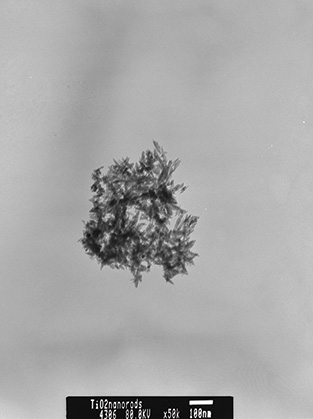
Nanoparticle Surface Area Concentration
Nanomaterials are used in the manufacture of a wide range of products, encompassing medicine, textiles, automobile parts, personal care products, food packaging and sporting goods. During the manufacture and use of these products, there is a potential for nanomaterials to become airborne, resulting in inhalation exposure to workers and consumers. A new ASTM International standard provides clear steps to collect airborne nanomaterials and analyze them to determine their surface area.
E2864, Test Method for Measurement of Airborne Metal and Metal Oxide Nanoparticle Surface Area Concentration in Inhalation Exposure Chambers Using Krypton Gas Adsorption, was developed by Subcommittee E56.02 on Physical and Chemical Characterization, part of ASTM International Committee E56 on Nanotechnology.
"There is a need to accurately characterize the physiochemical properties of nanomaterials to understand any linkage between a specific material property and an observed outcome in toxicology testing," said Aleksandr Stefaniak, research industrial hygienist, National Institute for Occupational Safety and Health, and an E56 member. "Surface area is considered to be an important nanomaterial property, and this test method fills a critical gap in that it provides the first standardized approach to determining the surface areas for airborne nanomaterials in the form that they are delivered to a test subject."
Stefaniak notes that the most important application of E2864 will be for inhalation toxicology testing being performed for research and regulatory purposes.
"E2864 will help scientists to better understand the properties of the nanomaterials they use in their experiments and promote the safe development and use of nanomaterials," says Stefaniak.
All interested parties are invited to join in the standards developing activities of E56.02. The subcommittee is seeking laboratories that have the capability to measure low surface area values using krypton gas as the adsorbate to participate in interlaboratory studies on E2864.
CONTACT Technical Information: Aleksandr Stefaniak, National Institute for Occupational Safety and Health • Sabraton, W.Va. • Phone: 304-285-6302 | ASTM Staff: Kathleen McClung • Phone: 610-832-9717 | Upcoming Meeting: May 5-6 • May Committee Week • Toronto, Ontario, Canada
 SN Home
SN Home Archive
Archive Advertisers
Advertisers Masthead
Masthead RateCard
RateCard Subscribe
Subscribe Email Editor
Email Editor